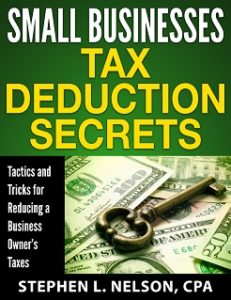
Politicians from both the left and right have begun to discuss again the inequality of wealth and income in the United States.
I think that’s an important discussion for us (as a country) to have, especially if we’re civil, careful about the math we use, and good about listening to other points of view.
But you know what? This isn’t a political blog. No way. It’s a practical, how-to, do-it-yourself blog. So here you and I can look at another piece of this discussion: How can you join the top five percent or how can your family join the top one percent?
As I start this, let me also note that when one talks about economic inequality, you can look at either income or wealth. Here, however, I’m going to focus on wealth because high wealth seems a lot less transitory that high income.
Joining the Top Five Percent
I want to start by talking about how someone joins the top five percent in terms of wealth.
But to do that, we need to first quantify what we even mean by the “top five percent.”
Fortunately, you can look at the most recent Federal Reserve study, “Survey of Consumer Finances,” to see that the median (or midpoint) net worth of families in the top ten percent in 2010 (the most recent year available) equals roughly $1,200,000.
For those families in the top ten percent, then, half fell below $1,200,000 and half fell above $1,200,000.
You can restate that information in another way, too: If your family’s net worth equaled $1,200,000 in 2010, your family’s net worth exceeded that of 95% of the population. And you were a member of the top five percent.
How does one hit $1,200,000? Well, suppose for sake of simplicity that a paid off home or home equity represents $200,000 of this $1.2 million.
That leaves $1,000,000 of other money, which is the sum one would need to accumulate via savings and investments.
To accumulate $1,000,000 in savings (in current-day, adjusted for inflation values), you need to save $15,000 a year for 30 years and earn a real rate of return equal to 5%.
In other words, someone who buys and pays off a house worth say $200,000 and then saves $15,000 over 30 years joins the top five percent. The net worth value this person accumulates ends up at right around $1,200,000.
If you use 35 years of saving and a slightly higher (arguably more accurate) real rate of return of 5.5%, you need to save $10,000 over 35 years to join the top five percent club.
Note: If inflation occurs over the thirty or thirty-five years the person saves, the saver needs to “inflate” his or her savings by the inflation rate. Also, this inflation means the saver will actually end up with some inflated future net worth that in current day dollars equals roughly $1.2 million.
Joining the Top One Percent
Now let me turn to the subject of joining the top one percent. As with the top one percent question, we need to start by defining just what the threshold to one percent status is.
You can poke around news organization websites and see figures that use a median top one percent net worth figure that’s usually in the high seven digits. But problems exist with this data. (Often times, for example, the data seems to be editorially massaged…)
And unfortunately, getting government data that concretely supports this high value with big samples is tricky to locate.
The Internal Revenue Service, however, provides personal wealth statistics at its website.
And this data, though not quite as granular as you might like, suggests a top one percent value of something less than $2,000,000.
But let me step you through my simple logic and crude math.
What the IRS data actually estimates is that in 2007 (the most recent year for which the data is available) about 2.3 million individuals had gross assets of $2,000,000 or more. The “least rich” people in this group also had about $1 million in debt on average, which means the least rich people in this group had individual net worth amounts equal to roughly $1 million.
If you assume that each and every one of these millionaires was in a marriage or domestic partnership with another millionaire (and this pushes the one-percent threshold up) each of these “least rich” households had about $2 million of net worth.
But note that because one percent of the US population in 2007 equaled roughly 3,000,000, around 700,000 people in the top one percent have less than $2,000,000 in gross assets and therefore something less than my rather generous estimate of $2 million of household net worth.
To keep the math of this blog post simple, though, let’s say that to get into the top one percent, you need $2,400,000 (or double what you need to get into the top five percent). I’m rounding up. I’m inflating for changes in price levels since 2007. But let’s for sake of discussion simplicity accept this $2.4 million figure.
In this case, you would need to save $20,000 to $30,000 a year for thirty to thirty-five years and have paid off a $400,000 house mortgage in order to earn membership in the one percent-er’s club.
That makes sense, right? I’ve just doubled the amounts required to join the five percent club.
Again, note that if inflation occurs, the saver needs to inflate the annual savings amounts. Also, if inflation occurs, the ending future value won’t be $2.4 million. The future value will be some larger, inflated amount that equates to $2.4 million in current date dollars
But I guess here’s the big epiphany in all this. Someone maybe needs to max out their 401(k) plus save a bit more plus pay off their mortgage in order to get into the top percentile.
Mechanically Easier than People Think?
Let me close with three general comments related to you or anyone else joining the top five percent or top one percent.
First, while making IRA contributions or 401(k) contributions every year is obviously a big challenge, it seems remarkable to me that the route to riches is so straightforward–at least in terms of the mechanical steps you need to take.
Keep in mind, too, that some and maybe even much of the money that a person might save could come from the federal and state government (in the form of tax deduction savings) and from an employer (in the form of a profit-sharing match.)
I think the mechanical simplicity is shocking.
By the way, most people just won’t have the income necessary to save, for example, an extra $800 or $1,200 a month. I get that. But with average household incomes in the U.S. roughly equal to $50,000, a substantial percentage of the population probably has a better shot at the five percent club than people realize.
The one trick is, a person needs to start early. It’s a three decade long process.
 Free Download: By the way, can I mention that we’ve got a free retirement planning e-book you can download?
Free Download: By the way, can I mention that we’ve got a free retirement planning e-book you can download?
That e-book outlines a simple, thirteen word retirement plan that many people can use to join the top ten percent…
More information and the button you use to download the free e-book appears here “Thirteen Word Retirement Plan“.
Surprisingly Unremarkably Normal?
A second comment: If you think about the sort of income or lifestyle the stereotypical five-percent-er or one-percent-er enjoys enjoys, it’s going to be pretty ordinary.
With $1 million of investment wealth, someone might make $40,000 or $50,000 in investment income and then, perhaps, also enjoy earnings from a job or business or from Social Security benefits.
With $2 million of investment wealth, someone might make $80,000 to $100,000 in investment income and then, again, perhaps enjoy additional earnings from a job or business or Social Security.
What all this means is that Thomas Stanley’s popular book, “The Millionaire Next Door,” describes the wealthy much more accurately than most television scriptwriters, novelists, and more than a few financial planners do.
The top five percent-ers and top one percent-ers for the most part live normal lives.
Shockingly Small in Size
And a final comment, which is I guess obvious but still important. These five percent and one percent clubs have (relatively speaking) only a few members.
Yes, in absolute terms, millions of people join the club at some point in their lives (even if only briefly).
But simple math says that (by definition) only one in twenty people join the five percent club. Only one in a hundred join the one percent club.
If you happen to be a member of either club or plan on becoming a member, you probably want to be both discreet and grateful about your situation.
Tip: If you’ve read this far, you might also be interested in my recent and related posts on what the top one percent really look like, on the investment strategies the top one percent use, and on the money mistakes the rich commonly make.
Do You Own a Small Business? Want to Save Taxes?
Here’s something that I’ve noticed again and again about small businesses. They usually don’t do a very good job about maximizing their tax deductions.
More specifically, small business owners usually don’t go to the effort of structuring their business activities to protect legitimate deductions, to create new deductions and to recycle (or double-deduct) the deductions which can be used more than once to save taxes.
Which neatly brings me to my e-book, Small Businesses Tax Deduction Secrets. This 70pp e-book addresses this information short-fall by talking about how you can annually save thousands or even tens of thousands of dollars in taxes simply by more effectively using legitimate business deductions.
Click for more info or to purchase and download
And a quick note: If you’re a client of our CPA firm, you don’t need to purchase this ebook. We will happily provide you with free copies of any of our books, including this one. Just ask for a copy next time you talk to us.

I think you read the wrong row in Table 4 in the Fed report. The $1.2M figure (median of top 10%) is percentile of *income*. Percentile of *net work* is in the second part of Table 4, a few pages lower. More like $1.8 M.
Thanks Craig. I am wrong. You are correct. So just to restate, per Table 4 the median net worth of the top ten percent (measured by income) equals roughly $1.2M. However, the median net worth of the top ten percent (measured by wealth which is what we’re talking about) equals roughly $1.8M.
Final point: So this means I need to update my “savings” numbers… but the roughly 50% bump in the net worth value means that calculating the “bumped” savings required is pretty straightforward. Rather than save $10K a year, one would need to save $15K a year. (A fifty percent bump in savings.)
Thanks again Craig.
Hello;
Would you answer this for me please???? We have 750K in mutual funds and a rental property business worth 2M (debt 700K). Rental property brings in 150K a year and 50K a year comes in SSI and retirement annunity. Take 60K a year from the mutual funds when the market is up. Are we in the top 1%, sure do not feel like it????
Thank you very much,
Rick and Amanda
Yes, you probably are. But you won’t feel like if if you compare yourself to people in the top 1% of the top 1%…
Do remember that the average household income in US is just over $50K a year and that the average person retires with not much more than a few thousand dollars in retirement savings.
“But simple math says that (by definition) only one in twenty people join the five percent club. Only one in a hundred join the one percent club.”
Nope. People accumulate wealth ad they get older. In the limit, everybody in the world would join the five percent club if they did so during the final five percent of their lifespan.
Geoff, I don’t understand. Are you suggesting that the oldest 5% of the population are typically top fiver percenters?
BTW, you’re commenting on a blog post I did about IRS statistics a while back, but if I was re-writing this post today, I would reference the studies that show people move into and out of the top ten or top five or top one percent pretty fluidly. See for example this post:
https://evergreensmallbusiness.com/financial-planning-for-top-one-percent/